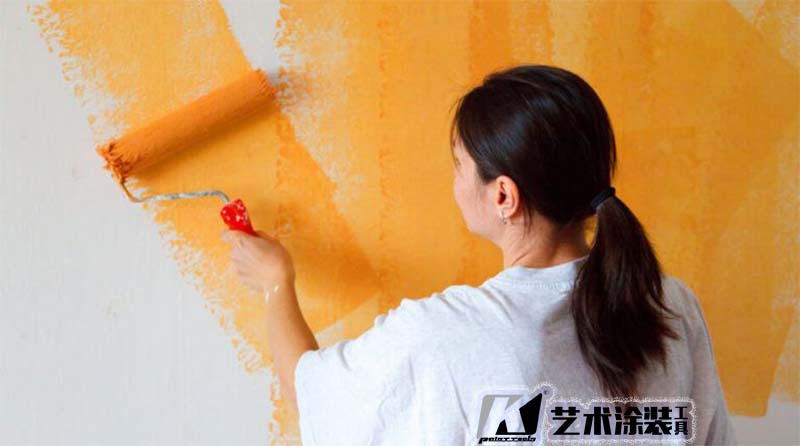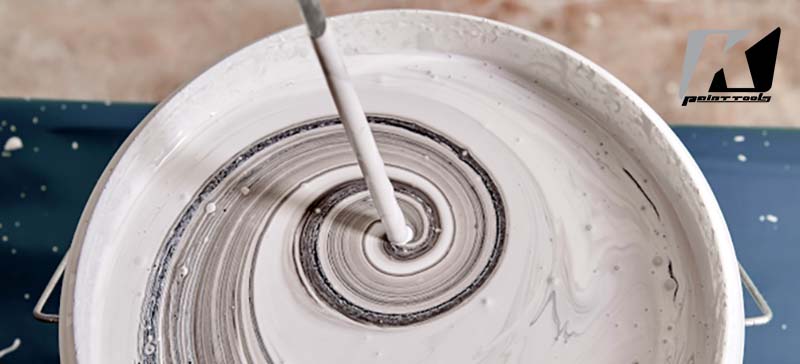Paint walls in color: tips & tricks for colours, stripes and patterns

Paint Walls in Color
Get a fresh coat of paint and your room will look new again. Whether it's red, brown, yellow or blue walls, as well as stripes and patterns on the walls, they create a sense of comfort and accentuate the character of the room. With a little crafting and our tips and tricks, you can achieve the best results when painting your walls! This saves you expensive paint costs and you can easily design your own room.
Paint the Walls
If you want to paint your walls with color and have already decided on the right shade, you have a variety of options when shopping for paint. When purchasing, you can use a ready-made color mix, or you can mix the desired color individually at the hardware store. It's up to you which option you choose. However, when buying paint, you should make sure that they are of good quality. We'll show you how to identify them in our wall color comparison.
Mix your Own-colors
If you want to mix the desired color for your walls yourself, you'll need white wall paint, tinted or pigment paint, a mixing bucket and a wooden mixing stick, or better yet, a mixing paddle for your drill.

It is very important to mix the correct tinted colors in the correct proportions in order to get the desired color results. It would be nice to have an example of a color, such as a piece of furniture, that you can compare to the color. Also, when painting walls, it always makes sense to simply apply paint in inconspicuous areas of the wall and let it dry. So you can be sure that the blended colors are indeed what you expect.
How Wall Paint Mixing Works
When mixing the wall paint, first put the white wall paint in the mixing bucket. Then you add tinting colors accordingly. When the desired shade is achieved, stir the paint vigorously with a wooden stick or paddle until the paint in the bucket has an even shade.
It's best to mix the amount of paint needed for painting right away. After that, it is often difficult to match the exact same color again. Also, if more wall paint is needed or if you want to paint another room with the same color, you should pay attention to the exact mixing ratio of the colors. You can do this, for example, by weighing the color on a kitchen scale.
Notes on painting over old paint
If the wall you want to paint already has paint, you should check ahead of time to see if the paint is dark. The easiest way to do this is to stick the tape on the wall and yank it off. If no color sticks to the tape, everything is fine. However, if the paint is sticking, you first have to remove the old paint and then prepare the wall for painting, such as with a deep primer.
Painted over Lime-paint
Lime paint cannot simply be painted over with latex paint. Therefore, the wall must be rinsed with a brush first. In order to ensure that the wall absorbs the new paint evenly, it should be pretreated with iron air-running before painting. A deep primer also ensures that the walls have less water absorption, so less paint is required when painting.
The walls you want to wallpaper should also be pre-treated with a deep primer to make it easier to remove the wallpaper after a few years if necessary. Anyone who's ever had to remove wallpaper from an untreated drywall wall knows it's no fun. We've compiled some helpful wallpaper removal tips for you!
Paint the Wallpaper
Painting wood chip wallpaper or paper wallpaper is usually easy and can be done in any wall color. After painting, air bubbles often form on paper wallpaper, but these usually disappear on their own. However, if the bubble doesn't go away on its own, you'll have to help by cutting it open and filling it with a spatula.
Non-woven wallpaper is also very common. If you want to paint them, you should look carefully at the surface beforehand. Smooth surfaces can easily be painted with latex paint. For structured surfaces, you should use as thick a latex paint as possible.
Pay attention to clean edges when painting walls with color
Colored walls look better when the color edges look clean and neat. There are some simple tricks to get the best results.
Walls must be dry, clean, as smooth as possible and free from dust.
To cover the edges, it is best to use tape (and paper) that is extra flat and not wrinkled. The painter's tape should press down firmly and evenly. It can't be bubbling.
With wood chip wallpaper, start by painting the edges the same color as the wall along the painter's tape. This will close the gap between the painter's tape and the wall. Then, you should allow the paint to dry well before starting to paint with the desired shade.
Start by painting the edges with the brush along the painter's tape. The paint can then be applied to large areas with a paint roller. To make the edge the same color as the rest of the wall, it should be reworked with a small paint roller to distribute the paint better.
For dark colors, you will get the best color results if you paint with Wet on Wet. It is best to pull the masking tape off the wall at a 45° angle before the paint is completely dry. So the wall paint doesn't have time to penetrate any crevices and you get a clean edge of color!
How to prevent streaks when painting walls
When it comes to painting, there is probably nothing more annoying than a wall that appears striped instead of a uniform color after painting. Fortunately, there are some simple tricks you can use to prevent streaks.
Doors and windows should be kept closed so that the paint does not dry too quickly. When painting large walls, it is best to work with two people. This automatically makes it faster. Streaks are usually caused by paint drying too quickly and the previous one has dried before you start the next one.
Work at a steady pace
Wet-on-wet paint: This method can be used to prevent edges from forming while painting. The paint roller moves across the wall to get the strips of paint to be painted over and over while still damp.
Draw clean stripes and patterns
Colorful stripes and patterns on the wall can really stand out. For best results, you should start by painting the edges of the stripes and patterns on the wall. A pencil is the best, you shouldn't press too hard with it. Otherwise, the line cannot be drawn so easily later.
If you use a spirit level and fold rule, you will get an even result. It works even better if you use an electronic level with a laser. This will project laser stripes onto your wall like a projector. This way you can mask without prepainting.
Our tip for clean stripes
With a piece of painter's tape and a long piece of string, you can apply straight lines in any position you want. In this way you prevent pencil marks and can mask off a clean strip. Then tape the edges with painter's tape. This should always be pressed evenly and firmly. Then proceed as follows:
First paint the edge along the painter's tape in the color the wall already has. Then let the paint dry well. This is how you prevent frayed edges.
Then apply the paint of the stripes and patterns with a short-pile roller. Let the paint dry well again and then paint the patterns and stripes a second time. You should pull off the masking tape at a 45° angle immediately after the second coat.
Suitable Tools: Paintbrush or paint roller
When painting, it is best to use both a paint roller and a brush. Roughly speaking, paint rollers can be used to treat large areas quickly and easily. Nooks and crannies are more easily reached with a brush















